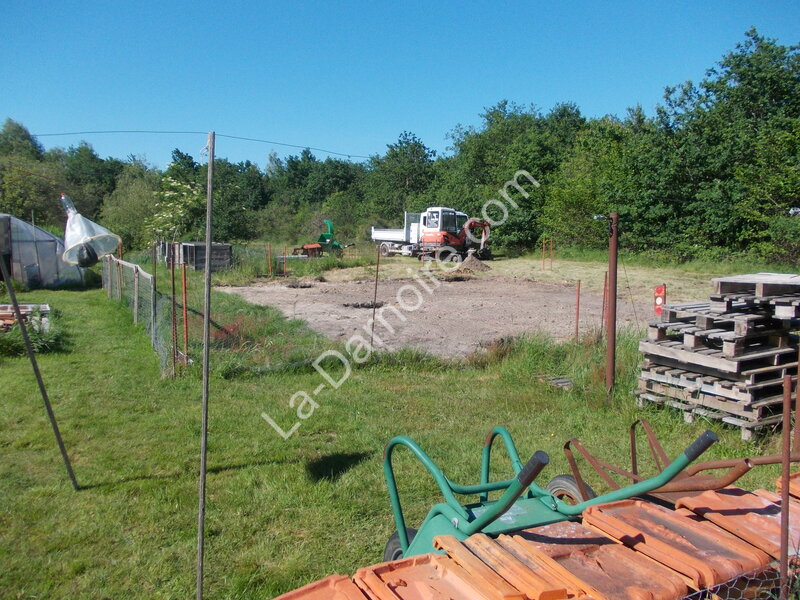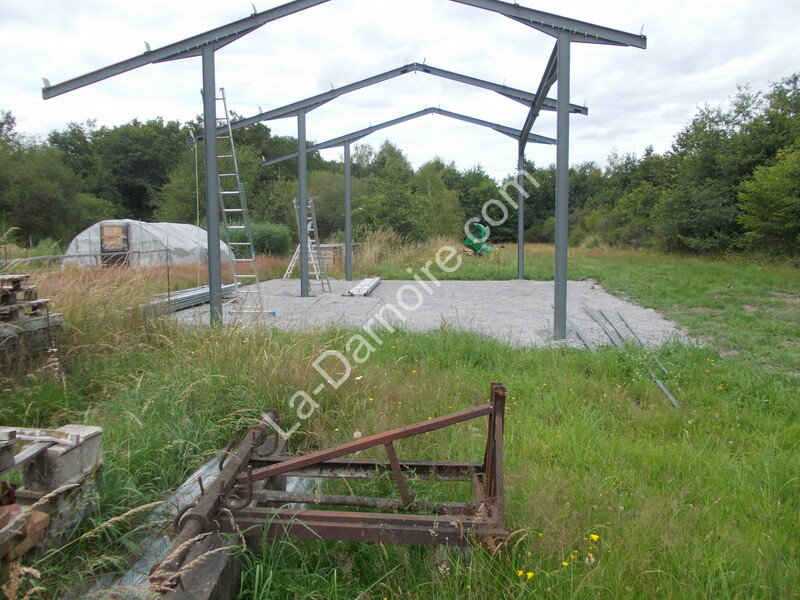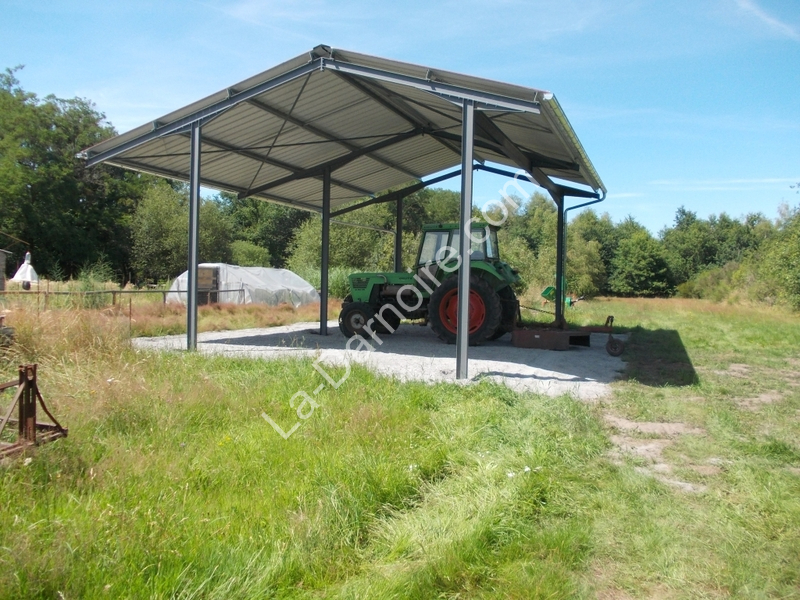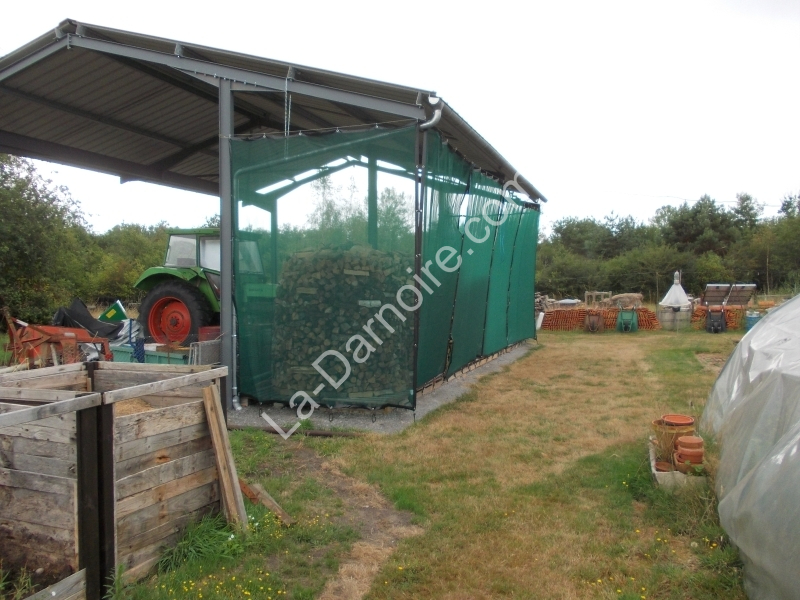In 2018 the Aged FIL passed away. Once the French government had taken its share of the inheritance (which involved us having to sell half the property to pay them), we had sufficient left over to enable the construction of a proper hangar.
The poor old tractor had been spending its years outside in the rain, so it was time to give it some proper shelter. I did some calculations regarding the size of hangar required; not only the tractor, but its various implements like the brushcutter needed to be kept out of the rain. And why not store all the firewood under it as well?
I worked out that a floor area of around 100m2 would probably do. So we trotted off to the Mairie to request planning permission.
We should have known better. Apparently we were now living in a "Natura 2000" environmental area which meant that the maximum size hangar we could get would be 50m2. And even that was questionable. "Why do you even need 50m2 ?" the official asked. We explained that a tractor was not the same size as the official's car - let alone all the accoutrements that went with it.
To cut a long story short, we eventually received planning permission for the seriously undersized hangar. "But what has this to do with holzhausens?" I hear you ask. Bear with me.
The first thing I had to do was dismantle the existing woodsheds. The contractor then cleared the area and dug foundation holes.
Of course all the existing firewood had to be stored somewhere! Online, I discovered a method of stacking firewood called a "holzhausen" which is supposedly German for "Wood house". This actually means "wooden houses", so a more proper term would seem to be "holzmiete" (wood-pile). Apparently this storage method is German in origin. European, in any event. Anyway, the shape resembles a beehive, and enables the storage of a considerable amount of wood on a very small footprint. In theory, wood stacked in this way also dries more quickly, due to the chimney effect caused by the beehive shape. I can't really comment on that, although it does seem to be the case.
So I placed a couple of pallets in an adjacent field, and got down to it. You place the first firewood pieces on the perimeter of a circle, and then lay the next course radially, so that everything slopes towards the middle of the stack. The centre of the circle is filled with firewood as well. Continue building in this manner. Eventually the inward slant of the pieces starts to disappear due to the V-shaped gaps in the outer portion of the stack. Firewood placed above these gaps will want to fall into the gap, creating a slant the wrong way. To solve this, place a perpendicular piece of firewood over the gap in the same orientation as the first row. (See later photos). The inward slant is important; it keeps the walls of the stack from falling outwards.
Once the stack has reached about knee height, place a long pole right across the stack, making sure the ends are aligned with the outsides of the firewood pieces. This helps to hold the holzhausen together as the height increases. Place a second pole at about waist-height, orientated at 90° to the first, and a third at chest height, orientated the same way as the first pole. When the holzhausen has reached head height you can start creating the "domed" top by placing pieces of firewood set slightly inwards of the previous row. You can then toss pieces on top if you can't quite reach!
When it comes to actually using the firewood, obviously take the upper pieces first...
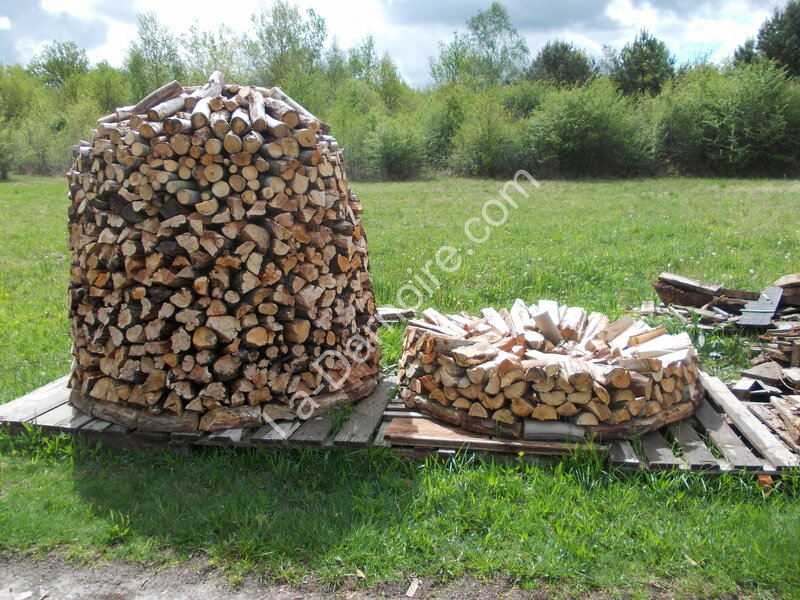
Before continuing with the description of our firewood storage, let's get the hangar construction out of the way. Once the concrete foundations had set, the hangar support posts were put in place:
And soon afterwards, the tractor could be parked in its new home. I had purposefully designed the hangar so that the area in front of the tractor could be used for the storage of firewood.
I laid some pallets on the compacted gravel in front of the tractor, and proceeded to build the holzhausens thereon using the procedure described above. Each one is 1.8m in diameter, and around 2m in height. This equates to nearly 5 steres of wood (or 1.3 cords) per holzhausen. There was sufficient room under the hangar for five stacks.
I calculate that each stack weighs approximately 2.8 tons. It's amazing how much wood can be stored in such a compact space.
I also suspended some windbreak material around the outside of the hangar in order to keep any wind-blown rain off the firewood. In the following photo, you can see the perpendicular pieces I mentioned in an earlier paragraph.
Two years later, I'm very pleased with how the firewood-stacking scenario has played out. The wood does seem to dry more quickly, and visitors also seem surprised by how much wood there is in each stack! Is it time-consuming to stack firewood in this way? Only at first. Once the first couple of rows are in place, it goes fairly quickly.
Next page: Boiler Stove


